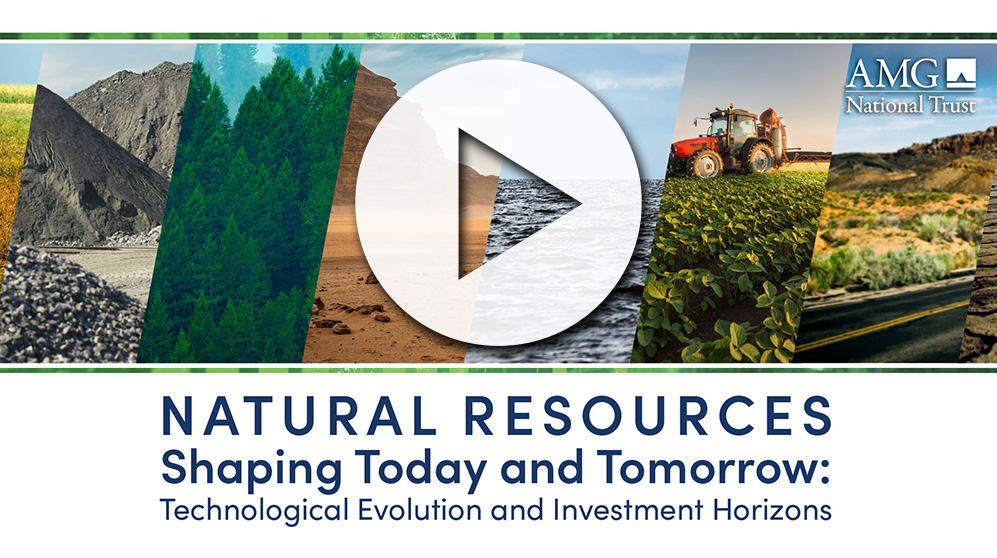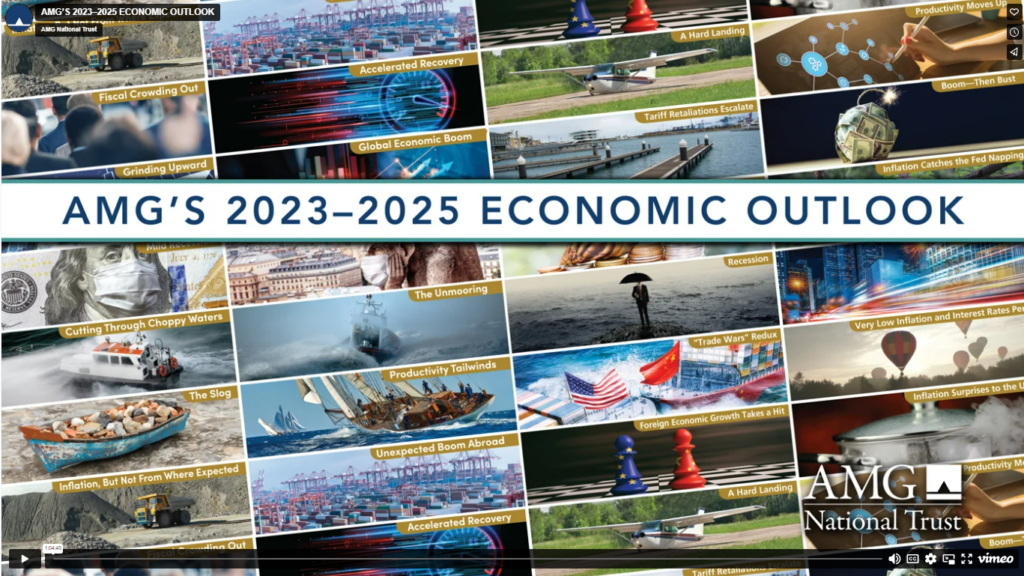Natural Resources: Shaping Today and Tomorrow
• 4 min read
Get the latest in Research & Insights
Sign up to receive a weekly email summary of new articles posted to AMG Research & Insights.

Insufficient capital spending to grow new supplies over the past decade has created opportunities across a wide spectrum of natural resources. At a September webinar for clients, AMG unveiled three broad investment themes with the greatest potential—electrification, shifting energy landscape and food security.
Besides companies that own and produce resources, other opportunities will come from companies that facilitate production. Think companies that make fertilizer needed to increase crop yields.
- Electrification: Copper is arguably the most important natural resource in terms of the electrification theme because of its widespread use within the global economy. Copper is used in everything electric, and with continued electrification a primary policy goal of economies around the world, investors have reason expect to see sustained demand growth for copper for years.
- Shifting Energy Landscape: Despite a global push for cleaner and renewable sources, oil and natural gas will likely remain viable investments for years to come. Supply-side constraints for these traditional energy commodities are likely to remain in place because economies have not been able to make the jump to other energy sources.Over the next 30 years, we will see renewables (primarily wind and solar power) all increase and coal will diminish, said Chris Jacoby, AMG’s senior vice president/private capital. But oil and gas are not going away. Natural gas demand in particular is likely to increase substantially, he said, because it’s reliable, available 24-7 and is relatively cheap with much lower (carbon) emissions. The primary supply constraints on oil and gas that will keep prices higher are a combination of policies from governments around the world aimed at cutting carbon emissions as well as the efforts of OPEC+ (traditional OPEC plus Russia), which has been instrumental in managing global supply since 2020. While AMG expects that it is unlikely that fossil fuels will be completely displaced over the next couple of decades, technology and innovation to accelerate efforts to transition to greener energy sources in coming years will present important areas of investment There are fascinating innovations that present economic models for alternatives to fossil fuels with applications across multiple industries. Having a balanced approach in a portfolio makes sense.
- Food security is important for most countries around the world. Grains and soybeans are key components of global food security. However, the availability of arable land, sufficient water, and the means of generating efficient crop yields is relatively low for much of the world.Food production is not a problem for the United States and Europe, said Josh Stevens, AMG’s senior vice president/capital management, but that’s not true for the rest of the world. As food-security concerns increase, look for developing countries to increasingly import western technologies and efficiencies to replace subsistence farming, he said. Simultaneously, expect prices for some key food stocks in developed countries to rise as agricultural products are sold into a global market. Also adding to demand are new non-food uses for crops that are being developed. In coming years, for instance, investors might see soybeans as components in auto tires and fuel. Also, look for innovation in technologies related to cleaning and recycling water. The Russia/Ukraine war illustrates how geopolitics plays a role in agriculture as well. The invasion has constrained grain supplies to North Africa, for which Ukraine serves as the primary wheat producer. Wars aside, supplies will probably be further constrained with world population expected to grow by 1.7 billion people over the next thirty years. Demographics combined with the lack of arable land and water, new industrial uses for crops and geopolitical tensions worldwide suggests that components of agricultural supply will trail demand growth for years to come
This information is for general information use only. It is not tailored to any specific situation, is not intended to be investment, tax, financial, legal, or other advice and should not be relied on as such. AMG’s opinions are subject to change without notice, and this report may not be updated to reflect changes in opinion. Forecasts, estimates, and certain other information contained herein are based on proprietary research and should not be considered investment advice or a recommendation to buy, sell or hold any particular security, strategy, or investment product.













